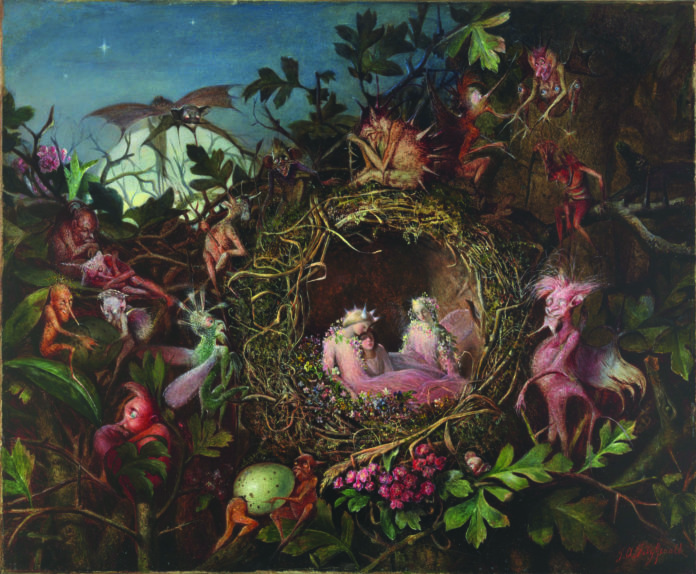
MIDDLE AGES ART ON VIEW: “The Fantasy of the Middle Ages”
J. Paul Getty Museum
Los Angeles, California
getty.edu
through September 11, 2022
The J. Paul Getty Museum has organized an intriguing exhibition titled “The Fantasy of the Middle Ages.” It explores the ways in which the medieval era has been mythologized, dramatized, and re-envisioned time and again.
For centuries, a moveable feast of castles, cathedrals, knights, damsels in distress, crusades, and plagues has consistently inspired the worlds of fine art, photography, film, literature, and gaming, even living history reenactments.
No other historical epoch has so captivated “modern” people as this one. Over time, an element of fantasy has inserted itself, conjuring legendary and magical elements — such as imaginary creatures and other beings — that have made a profound impact on popular culture.
The phrases “Middle Ages,” “Dark Ages,” and “medieval” often conjure images of darkness, ignorance, and conflict. But the exhibition’s curators — Larisa Grollemond of the Getty and Bryan C. Keene, who worked as a curator there before heading to Riverside City College nearby — reject this misconception. In fact, the period 500–1500 AD encompassed artistic and intellectual growth; in particular, scribes and artists produced the tens of thousands of illuminated manuscripts that have powerfully informed our vision of their era.
All of us have grown up familiar with the soaring castles of Sleeping Beauty, the bloody battles of Game of Thrones, the weirdness of Middle-Earth in The Lord of the Rings, and the mythic beasts in Dungeons & Dragons, not to mention the chain of creepy restaurants called Medieval Times. So what makes the Middle Ages so flexible — and applicable — to us, compared to, just for example, the High Renaissance?
Pursuing this important question, the exhibition reveals how the medieval world has served as an ideal launchpad for exploring contemporary concerns and anxieties.
Bottom line: how we imagine the Middle Ages says far more about our moment than it does about the actual period.
The exhibition is accompanied by a luminous 136-page catalogue that contains 142 color illustrations. Appropriately, its preface has been authored by the gifted costume designer for Game of Thrones, Michele Clapton.
> Visit EricRhoads.com to learn about more opportunities for artists and art collectors, including retreats, international art trips, art conventions, and more.
> Sign up to receive Fine Art Today, our free weekly e-newsletter
> Subscribe to Fine Art Connoisseur magazine, so you never miss an issue






